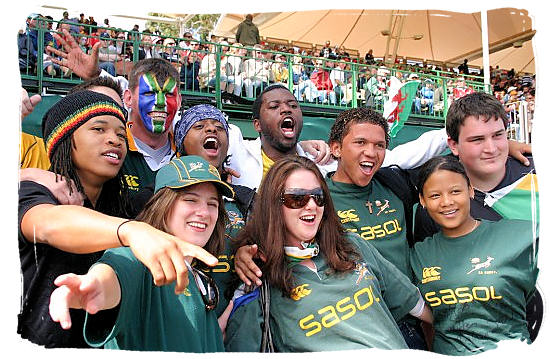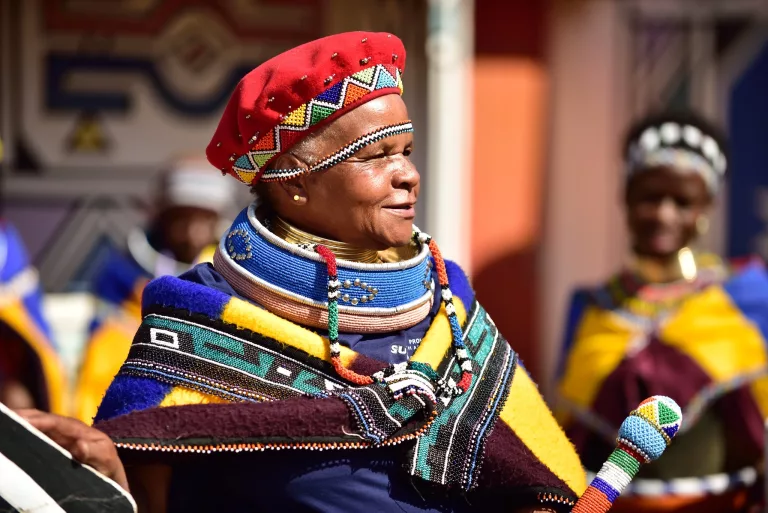South African Culture Today Can Be Fun For Everyone
South African Culture Today Can Be Fun For Everyone
Blog Article
Not known Factual Statements About South African Culture Today
Table of ContentsSome Known Incorrect Statements About South African Culture Today 7 Simple Techniques For South African Culture TodayLittle Known Facts About South African Culture Today.How South African Culture Today can Save You Time, Stress, and Money.The Greatest Guide To South African Culture TodaySouth African Culture Today Things To Know Before You Buy
This adheres to with singing and drum beating. The new bride and groom after that consult with the senior citizens and talk regarding the value of their union. An issue of importance in Zambian towns is the diing of enjoyed ones. All members of the town placed money, time and effort with each other for the burial of the deceased.Throughout the mourning period; guys stay outside the house and the women remain inside your home of the deceased. After chatting about the deceased, the town walks to the place of funeral to state their last bye-byes. Songs and dancing is an extremely important aspect of the Zambian culture. The numerous tribal systems have their very own dance forms; however, makishi is typical among all people.
The Of South African Culture Today
When it concerns songs, drums are used one of the most, with a selection of drumming ceremonies. In Zambia, bulk of individuals are Christian; Protestant and Roman Catholic. There are little teams of Muslims and Hindus, with the remainder complying with regional indigenous tribal ideas.

South African heritage and society is exceptionally diverse, and consists of several teams of individuals that each have their own customs and beliefs. Having such a variety of individuals and cultures is what makes South Africa so one-of-a-kind. In truth feeling of the expression, we are a rainbow country.
South Africa has approximately three hundred thousand Portuguese individuals staying in it. Making it the 7th on the checklist of countries with one of the most Portuguese people in it outside of Portugal. Portuguese is not just a society, but it is likewise a language and a race. Portuguese individuals stem from the country of Portugal in Europe, nevertheless, as a result of Portugal (like numerous various other countries in Europe) exploring the globe and overcoming other nations throughout the 15th 20th centuries, South Africa has what we call Portuguese South African's living in it.
4 Easy Facts About South African Culture Today Described
Among the famous features of the topography is a plateau that covers virtually 2 thirds of the center of the nation. The plateau complex increases towards the southeast, where it climaxes in the Drakensberg range, component of an escarpment that divides the plateau from the seaside areas. The Drakensburg includes Champagne Castle, the greatest optimal in the nation.
The area north of the Witwatersrand, called the bushveld, slopes downward from east to west towards the Limpopo River, which develops the global border. The western section of the plateau, the middleveld, also descends in the direction of the west and varies in elevation in between the highveld and bushveld. Between the Drakensburg and the eastern and southern coastline, the land comes down to the sea.
Nearer the shore there is a low-lying plain called the eastern lowveld. Southwest of the plateau the nation comes to be considerably a lot more arid, paving the way to the stony desert of the Great Karroo, approached imp source the eastern by the reduced, better watered plateau of the Little Karroo. Separating the completely dry southerly inside from the sandy coastal of the southerly coast and West Cape is one more variety, the Langeberg.
Our South African Culture Today Statements
The country's racially, ethnically, and politically divided history has actually created national and subnational symbols that still operate as signs of the nation, and others signs that are approved just by specific groups. The monuments to white settler conquest and political prominence, such as the Afrikaner Voortrekker ("pioneer") Monument in Pretoria and the Rhodes Monument recognizing the British colonial empire contractor and Cape head of state Cecil Rhodes, continue to be sectarian icons.
The initial modern occupants were the San ("bushman") hunter-gatherers and the Khoi ("Hottentot") individuals, who herded animals (South African culture today). The San may have existed for hundreds of years and left evidence of their presence in countless ancient cavern paintings ("rock art"). Bantu-speaking clans that were the ancestors of the Nguni (today's amaZulu, amaXhosa, amaSwazi, and vaTsonga individuals) and Tswana-Sotho language teams (today's Batswana and Southern and Northern Basotho) moved below east Africa as early as the fifteenth century

The 2 former republics of the Orange Free State and Transvaal (South African Republic) were established by Afrikaner inhabitants who defeated and dispossessed the Basotho and Batswana. Lesotho would have been forcibly included right into the Orange Free State without the expansion of British security in 1869. The best marriage of the nation arised from the South African Battle (18991902) between the British and both Afrikaner republics, which minimized the country to destroy at the beginning of the twentieth century.
Afrikaners historically considered themselves the only true South Africans and, while providing full citizenship to all locals of European descent, refuted that status to people of color until the autonomous shift of 1994. British South Africans maintain a sense of cultural and social link to Great Britain without damaging their identification as South Africans.
Some Known Factual Statements About South African Culture Today
The diversity and fragmentation within ethnic groups and the balance of stress between those teams during the twentieth century avoided interethnic civil conflict. While intergroup tensions over sources, entitlements, and political prominence remain, those problems are as likely to match Zulu versus Zulu as Zulu against Xhosa or African against Afrikaner.
From colonial India, British vendors and administrators brought the bent metal ornamental roof coverings and slender shoelace job pillars that still try this website symbolize the outdoor redirected here patios of homes in communities and cities throughout the nation. Residences of praise add an important building facet also in the tiniest communities. In enhancement to the skyrocketing steeples and traditional stonework of Afrikaans Dutch Reformed churches, Anglican churches, synagogues, mosques, and Hindu shrines provide range to the religious building scene.

Butchering and the brewing of typical grain beer are essential in safeguarding the involvement and goodwill of the ancestors who are taken into consideration the guardians of good luck, success, and health. Indian communities preserve their indigenous cooking traditions and use them on Islamic and Hindu routine and ritualistic events. Afrikaners and Coloured people collect at weekend breaks and special occasions at multifamily bbqs called braais, where area bonds are strengthened.
Because this was the key financial business of both black Africans and white colonists, dispute between those groups fixated the belongings of grazing land and livestock. In 1867, the largest diamond deposits worldwide were found at Kimberley in the west central area. The riches from those areas assisted finance the exploitation of the best gold reef worldwide, which was uncovered on the Witwatersrand in 1886.
South African Culture Today - The Facts
This resulted in misconceptions and intentional misrepresentation in the ventures of white settlers and federal government officials with African chiefs throughout the colonial period (South African culture today). In the facility of African gets, some aspects of common and primarily "tribal count on" land period were preserved, and even in white country areas, kinds of common period were still exercised in areas with African neighborhoods
After the autonomous change of 1994, programs for land restitution, redistribution, and reform were set up, but progression has been slow-moving. The white minority still manages eighty percent of the land. In the wake of farming land invasions in Zimbabwe, the Division of Land Matters has actually promised to speed up land redistribution.
Report this page